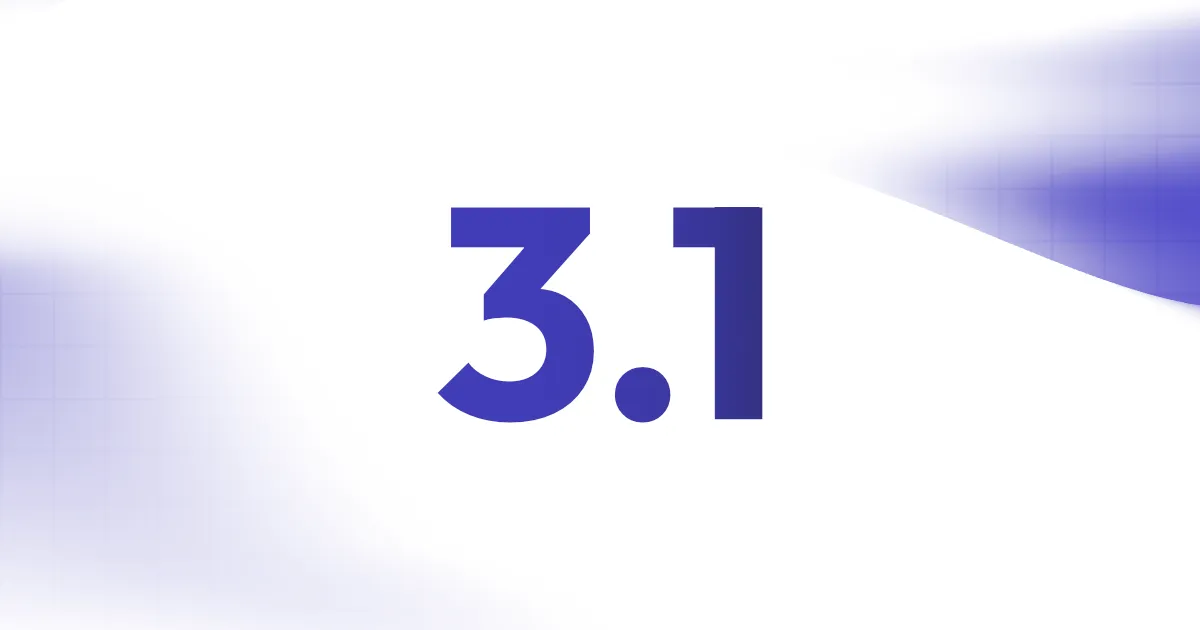Yumma CSS 3.1

Today, we’re excited to bring you Yumma CSS v3.1.0! This update adds support for new pseudo-class variants and eliminates legacy CSS files, reducing the framework’s size and improving performance as it grows.
You may also want to take a look at some of the release notes but, anyway, these are the most noticeable shifts:
- New pseudo-class variants: New
:focusand:activesupport for all base utilities - Legacy CSS files removed: Better performance with CLI-only approach
- Migration guide: Simple steps to upgrade your project
This is an incremental update that may contain breaking changes. Minor releases follow semantic versioning conventions. In other words, a migration is necessary to continue using the framework.
New pseudo-class variants
We’re expanding the framework’s interactivity capabilities by adding support for two essential pseudo-class variants that are compatible with all the framework’s base utilities.
Focus variants
You can now apply styles to elements that receive focus using the f: prefix. This is extremely useful for making form elements and buttons more accessible and interactive.
<button class="bg-indigo f:oc-indigo-5 f:oo-2 f:os-s f:ow-2 h:bg-indigo-7 px-4 py-2 rad-1 tc-white">Focus me!</button>Active variants
The a: prefix allows you to style elements when they are being pressed or clicked. It’s perfect for creating responsive button interactions and touch feedback.
<button class="bg-indigo h:bg-indigo-7 a:bg-indigo-9 px-4 py-2 rad-1 tc-white">Press me!</button>Legacy CSS files removed
As part of our ongoing efforts to improve performance and optimize Yumma CSS, we have completely removed the legacy CSS files, yumma.css and yumma.min.css, from the distribution directory.
Why this change?
This change brings several benefits:
- Better performance: No more shipping unused CSS to the browser
- Smaller bundle sizes: Only the utilities you actually use are compiled
- Consistency: Aligns with the modern CLI-first approach introduced in v3.0
What this means
If you’re already using the Yumma CLI (introduced in v3.0), this change should not feel like a breaking change. However, if you’re still importing CSS files directly, you will need to migrate.
The CLI automatically scans your project and generates only the necessary CSS, resulting in faster builds and smaller final CSS files.
Migration guide
If you’re still using the legacy CSS import approach, here’s how to migrate to the CLI-based workflow:
-
Remove CSS imports
Delete any direct imports of Yumma CSS files from your stylesheets.
globals.css @import "/node_modules/yummacss/dist/yumma.css";@import "/node_modules/yummacss/dist/yumma.min.css"; -
Install Yumma CSS as
devDependencyIf you haven’t already, install Yumma CSS as a development dependency.
Terminal pnpm add yummacss -DTerminal npm i yummacss -DTerminal yarn add yummacss -D -
Create configuration file
Add a
yummacss.config.jsfile to your project root if you don’t have one already.Learn more about how to set up the configuration file here.
yummacss.config.js export default {source: ["./src/**/*.html", "./src/**/*.js", "./src/**/*.jsx"],output: "./src/globals.css",buildOptions: {reset: true,minify: false,},}; -
Build your CSS
Run the build command to generate your CSS file.
Terminal pnpm yummacss buildTerminal npx yummacss buildTerminal yarn yummacss build -
Update your build process
Make sure to run
yummacss buildas part of your development and production build processes.
Watching for changes
You can also use the yummacss watch command to automatically rebuild your CSS when you make changes to your source files.
pnpm yummacss watchnpx yummacss watchyarn yummacss watchUpgrade
You can upgrade your projects by getting the latest version of yummacss from npm:
pnpm add yummacss@latestnpm i yummacss@latestyarn add yummacss@latestIf you’re using the CLI approach (recommended), the upgrade process is seamless. Just run your build command after updating, and you’ll automatically get access to the new :focus and :active variants across all your utilities.

